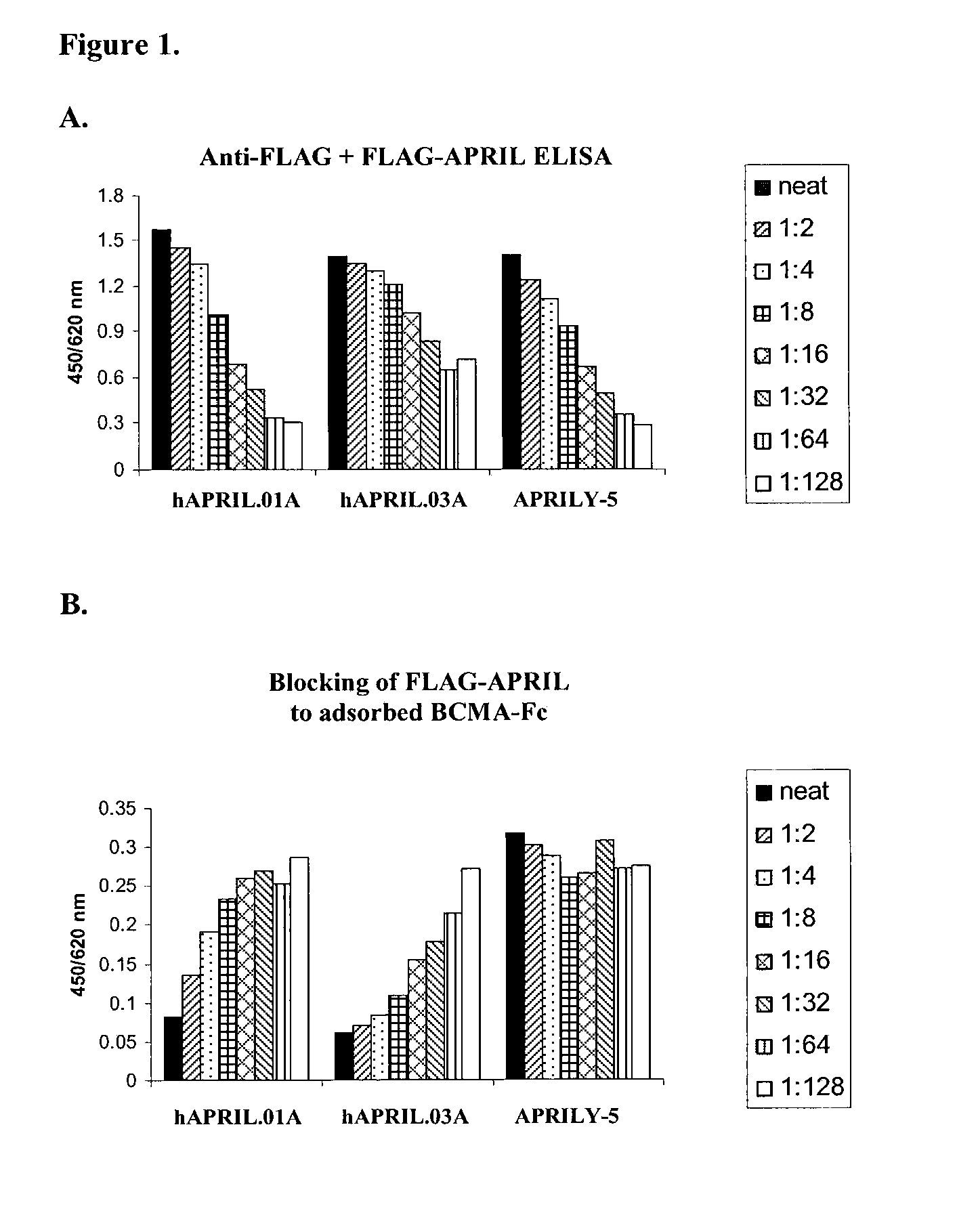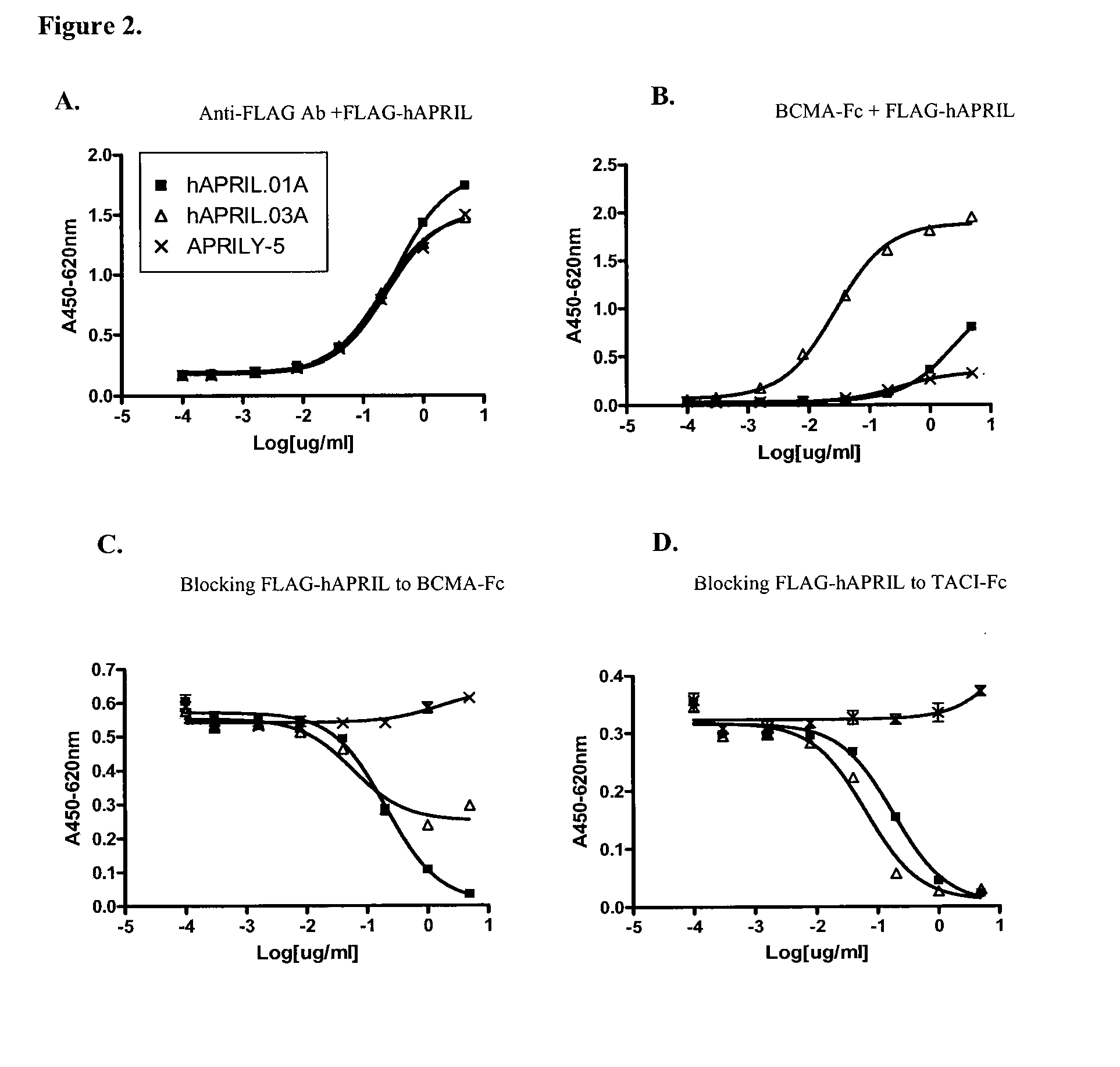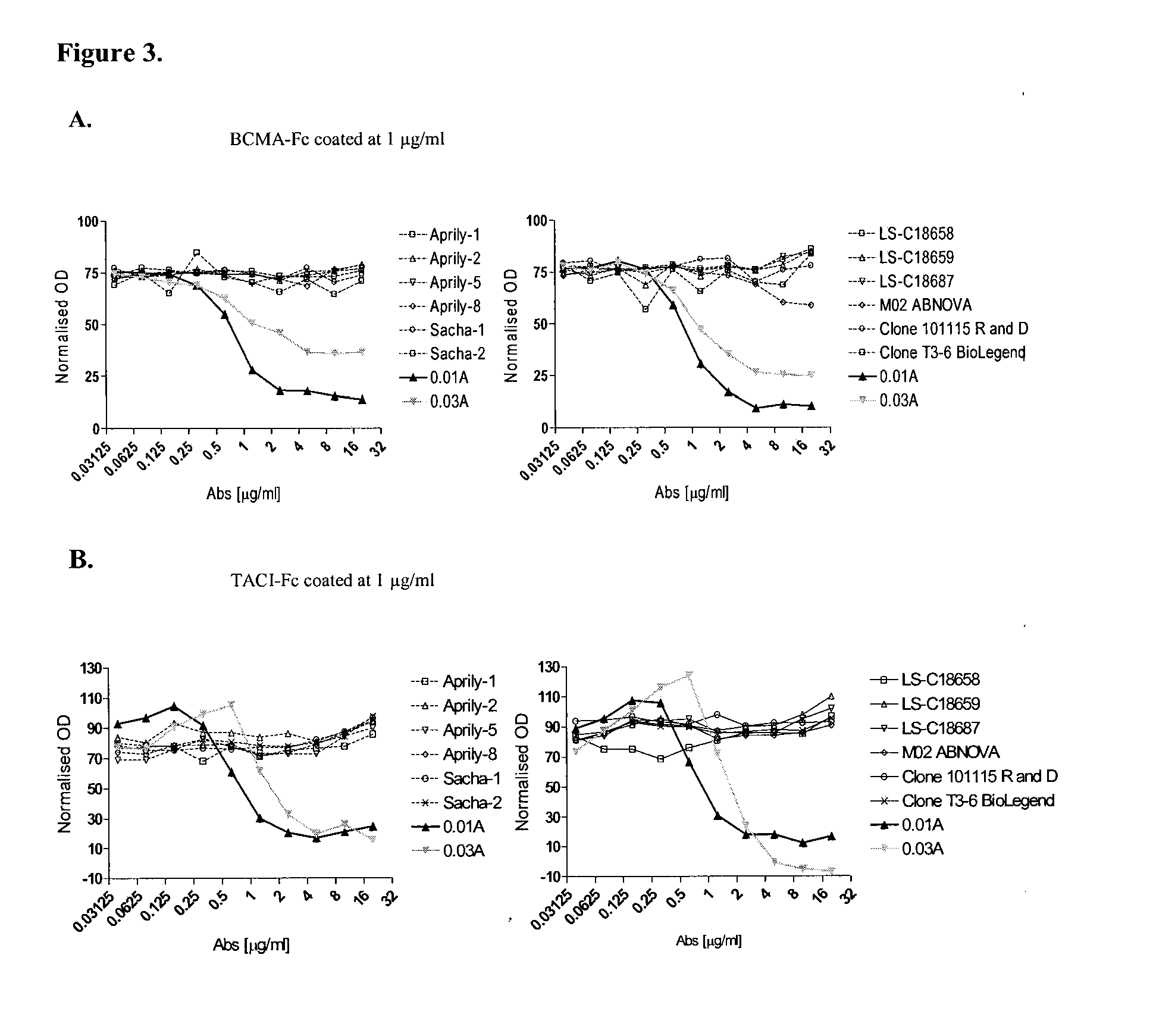Antibodies against a proliferating inducing ligand (APRIL)
a proliferating inducing ligand and antibody technology, applied in the field of april antibodies, can solve the problems of reducing the production of ifn-gamma, reducing the production of ig, and reducing the appearance of germinal centers in synovial tissue, so as to long-term immune control of disease, and induce or facilitate initial clinical response.
- Summary
- Abstract
- Description
- Claims
- Application Information
AI Technical Summary
Benefits of technology
Problems solved by technology
Method used
Image
Examples
example 1
Immunization and Selection of Anti-APRIL Antibodies
[0146]Immunization of Mice with APRIL cDNA
[0147]To generate antibodies against the human APRIL protein, a cDNA encoding the full length open reading frame of APRIL was subcloned into the pCI-neo vector (Promega, Madison, Wis.). Expression of the obtained vector was checked by transient transfection of pCI-neo-hAPRIL in 293 cells (American Type Culture Collection, Manassas, Va.) and immunoblotting with mouse anti-hAPRIL IgG1 Aprily-5 (1:5,000) (Alexis, San Diego, Calif.), followed by goat anti-mouse IgG1-HRP (1:2,000) (Southern Biotechnology, Birmingham, Ala.). Mice were immunized by gene gun immunization using a Helios Gene gun (BioRad, Hercules, Calif.) and DNA coated gold bullets (BioRad) following manufacturer's instructions. Briefly, 1 μm gold particles were coated with pCI-neo-hAPRIL cDNA and commercial expression vectors for mouse Flt3L and mouse GM-CSF in a 2:1:1 ratio (both from Aldevron, Fargo, N. Dak.). A total of 1 μg of ...
example 2
Purification and Characterization of Anti-APRIL Antibodies
[0153]Stabilization of Anti-APRIL Producing Hybridomas and Purification of Anti-APRIL Antibodies
[0154]Clonal cell populations were obtained for each hybridoma by multiple rounds of limiting dilutions (six for hAPRIL.01A and four for hAPRIL.03A). Stable hybridomas were cultured in serum-free media using CELLine bioreactors (Integra-Biosciences, Chur, Switzerland) according to manufacturer's instructions. Following 7-10 days in culture, supernatants were harvested and filtered through a 0.22 μM nitrocellulose membrane. Supernatants were diluted 1:1 in high salt binding buffer (1 M Glycine / 2M NaCl, pH 9.0), and antibodies were purified with Protein G HiTrap 5 ml columns (GE Healthcare, Piscataway, N.J.). After PBS wash of the column, antibodies were eluted with 0.1 M Glycine pH 2.7 and neutralized with 3 M Tris. Buffer was exchanged for PBS using PD-10 gel-filtration columns (GE Healthcare). Antibodies were concentrated with Ami...
example 3
Functional Profiling of Murine Anti-Human APRIL Antibodies
[0167]Mouse B cell response to APRIL
[0168]In order to show that the antibodies of this invention can functionally block APRIL in-vitro a mouse B cell assays was used to examine two APRIL driven responses in B cells—proliferation and IgA production.
[0169]All cell lines were maintained at 37° C. with 5% CO2. Mouse splenocytes and purified B cells were grown in RPMI-1640 (Gibco) supplemented with 8% FCS, 2 mM Glutamine and Beta-mercaptoethanol at 50 μM, and supplemented with penicillin and streptomycin at a concentration of 10 μg / ml. Splenic mouse B cells were isolated from wild-type mice using magnetic activated cell separation (MACS) columns with CD45R / B220 MACS beads (Miltenyi Biotec, Utrecht, The Netherlands). The cells were cultured in 96-well round-bottomed microtiter plates at a density of 2×105 / well in a final volume of 200 For all assays conditioned medium containing the various forms of soluble APRIL were normalised f...
PUM
 Login to View More
Login to View More Abstract
Description
Claims
Application Information
 Login to View More
Login to View More - R&D
- Intellectual Property
- Life Sciences
- Materials
- Tech Scout
- Unparalleled Data Quality
- Higher Quality Content
- 60% Fewer Hallucinations
Browse by: Latest US Patents, China's latest patents, Technical Efficacy Thesaurus, Application Domain, Technology Topic, Popular Technical Reports.
© 2025 PatSnap. All rights reserved.Legal|Privacy policy|Modern Slavery Act Transparency Statement|Sitemap|About US| Contact US: help@patsnap.com



